Alaska Travel Tips
Alaska contains 17 of North America’s tallest peaks, over 27,000 glaciers, the United States’ only temperate rainforest, and seemingly endless acres of shoreline. Alaska’s vast landscape — bigger than Texas, California and Montana combined — delivers endless opportunities for land-based adventures and cruising along the coastline. It’s no wonder why so many travelers dream of visiting Alaska, and why planning a vacation to the nation’s largest state can feel a bit daunting. Here are the state’s top travel tips to get you started.
Do I need a passport to go to Alaska?
What is the best month to go to Alaska?
How much time do I need to visit Alaska?
What should I pack to visit Alaska?
Is Alaska affordable?
Where are the best places to see bears in Alaska?
Is Alaska accessible for people with limited mobility?
Is it easy to make reservations for a trip to Alaska?
Is marijuana legal in Alaska?
How many time zones does Alaska have?
What can I buy in Alaska?
Are there mosquitos in Alaska?
What should I see in Alaska?
Where is the Iditarod National Historic Trail?
Where is the most beautiful place in Alaska?
Do I need a passport to go to Alaska?
United States residents do not need a passport to go to Alaska. Beginning May 7, 2025, U.S. citizens aged 18 and up traveling by air within the United States will need REAL ID-compliant identification to go through airport security checkpoints. REAL ID-compliant identification includes a state-issued REAL ID, U.S. Passport, military ID or other form of compliant ID. REAL ID driver’s licenses, generally marked with a star on the upper portion of the card, are available at your home state’s department of motor vehicles.

What is the best month to go to Alaska?
Alaska is a must-see destination year-round. Every month offers its own unique experiences! February and March are great for watching dogsled races and for attending winter festivals, while whales and other migrating marine wildlife start appearing in Alaska’s waters in April and May. June through August are the most popular months to visit Alaska, with long daylight hours, the warmest temperatures, best wildlife viewing, and the most tours, activities, cruise options, and accommodations available. Though brief, the fall colors of the tundra and trees appear in late August further north and mid to late September further south, offering a stunning backdrop of red, yellow, and orange.
The shorter days from late August through April are the best times to see the northern lights. Snow can be on the ground in the Southcentral, Interior, and Arctic regions from September/October through April/May, offering endless opportunities for winter activities like skiing, dog sledding, and winter sightseeing. Travelers can often find discounts on tours and lodging during the spring and fall shoulder seasons, which are perfect times to experience Alaska like the locals.
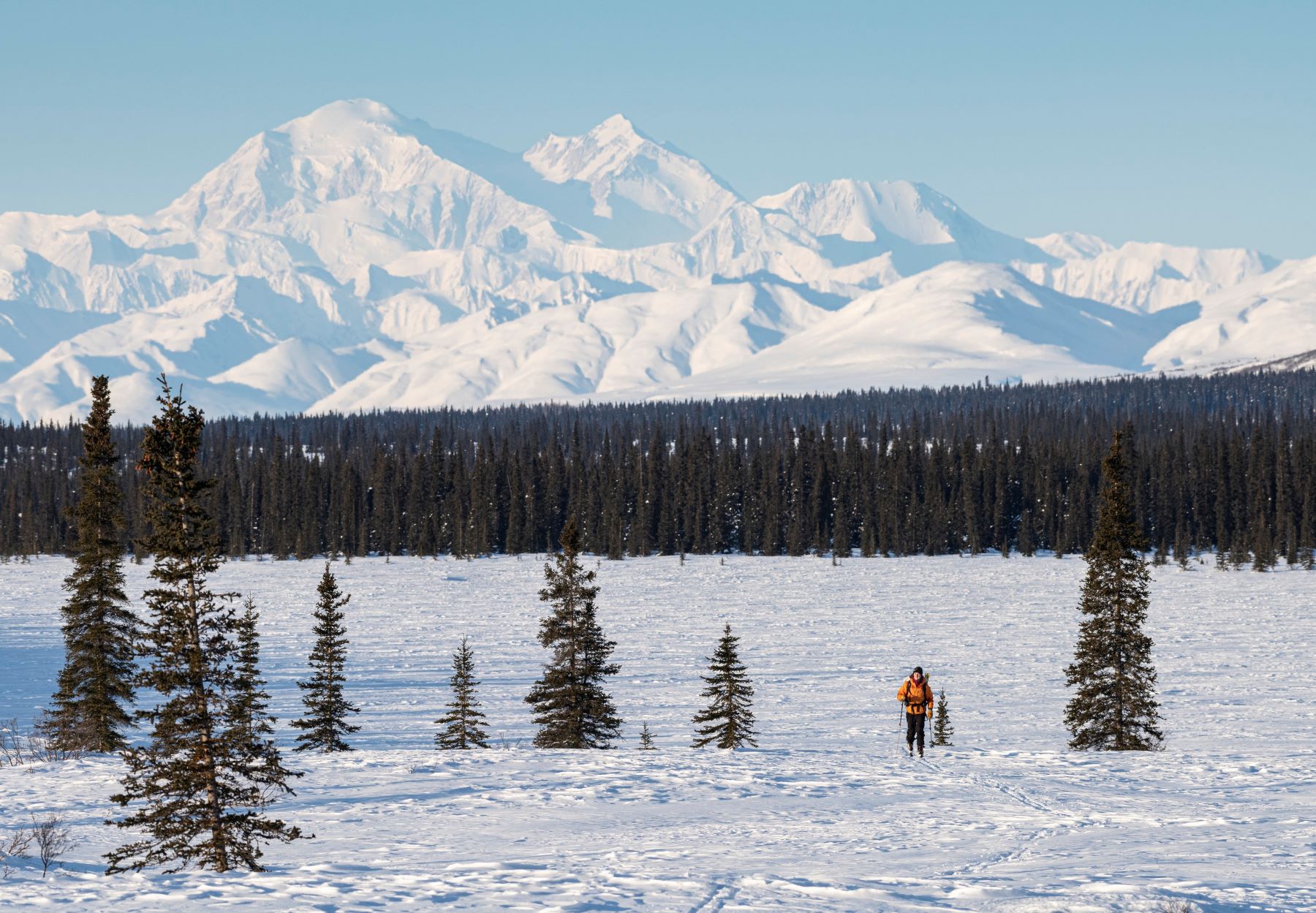
How much time do I need to visit Alaska?
If you have a long weekend or a week, you have enough time for a thrilling and memorable vacation to Alaska. Almost any itinerary can be adapted to match the time you have. Planning your perfect itinerary is easy due to the wide variety of activities and tours available to you. Whether you have 7 or 17 days to travel, here are some handy trip suggestions:
7 days:
- Fly round-trip to Alaska and spend your time exploring independently.
- Focus on one area of the state and take a variety of shorter excursions around that area.
- Rent a car or RV and discover Alaska's unique roadside communities. You'll get a chance to meet friendly people, see wildlife, and view unforgettable scenery. Stop where you want for as long as you want.
7 to 14 days:
- Fly round-trip to Alaska or fly one way and take a cruise ship or ferry back home.
- If you plan to travel by sea, add a few shore excursions to experience adventures such as flightseeing, kayaking, hiking tours, and fishing trips.
- Add land-based day trips and tours to your itinerary. Plan on one low-key day for every two days of intensive touring.
14 days or more:
- Travel to and from the state using different methods of transportation.
- Cruise to Alaska through the Inside Passage and across the Gulf of Alaska, and then add on a land-based package to explore Southcentral and Interior Alaska.
- Drive to and from Alaska in your own car or RV and see several regions of the state by road, adding occasional flightseeing trips, land-based tours, and day cruises.
- Schedule a single-day railroad sightseeing trip or a multi-day train itinerary.
- See more than one region.
- Take a few days to visit the “bush” for explorations of gold rush history and Alaska Native culture. Plan a one- or two-day visit to an Alaskan “bush” community—a remote community that’s not connected to the state’s road system an only accessible by small plane—for an in-depth discovery of Alaskan history and Alaska Native culture.

What should I pack to visit Alaska?
When you’re packing for your Alaska vacation, it’s best to pack in layers. Weather can vary dramatically by region and season. Alaska’s summer season is May through September. May is generally the driest month across the state, even in the temperate rainforest of the Inside Passage. By July, daytime temperatures in the Interior average around 70 degrees F—although it has been known to reach well into the 90s. Temperatures in the coastal areas and higher elevations rarely get above 65 degrees.
Temperatures across the state start cooling in August and September. Winter in Alaska is roughly October through March, although temperatures and daylight vary from region to region. Coastal areas are more temperate, rarely falling below 20 degrees. Winter in the Interior and Arctic regions are completely different. You may start seeing snow in the Interior as early as October, and temperatures may dip to 20 below zero during the winter months. For more detailed weather and packing information, see our regional climate and packing guide.
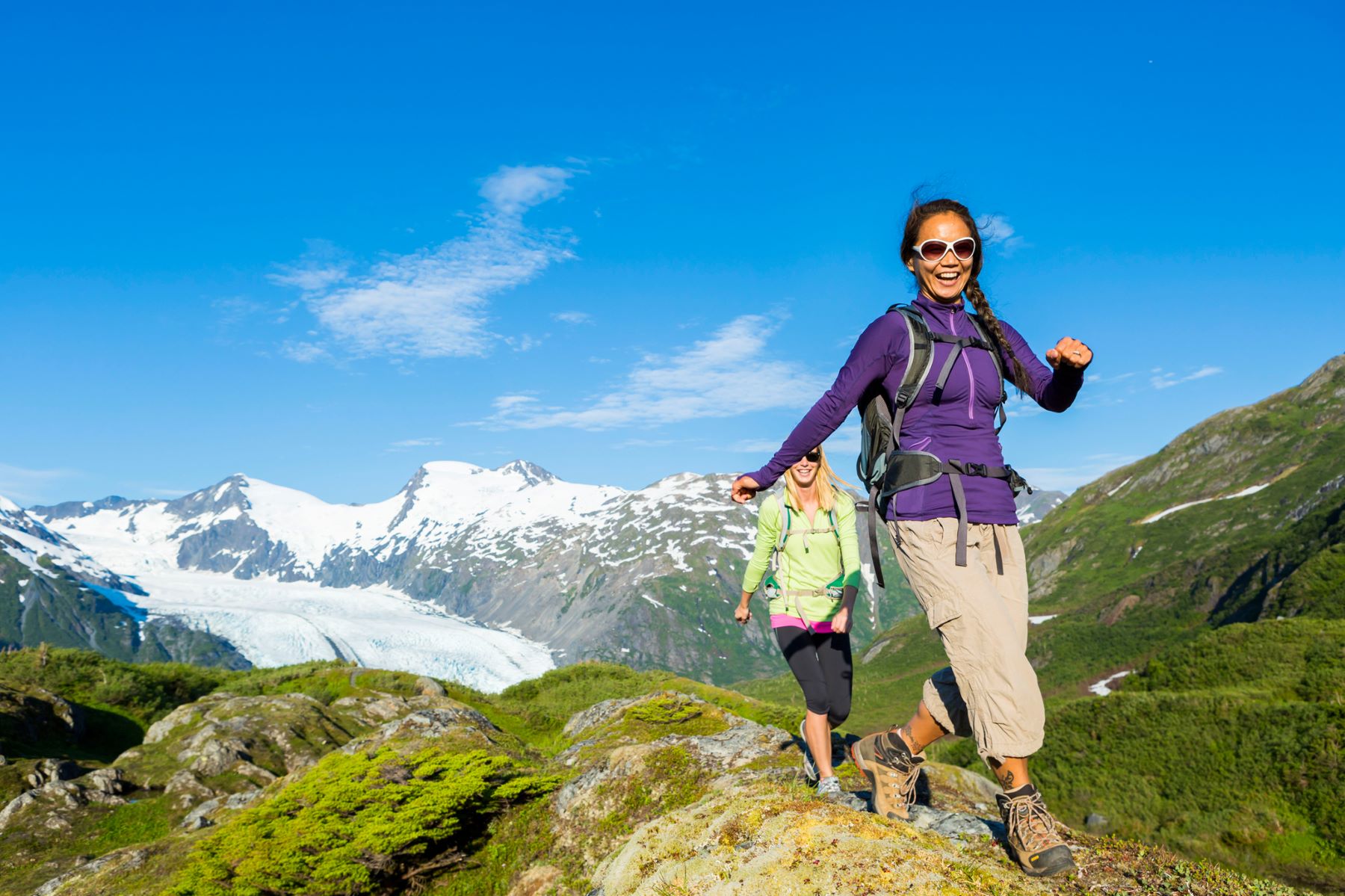
Is Alaska affordable?
While Alaska has a relatively high cost of living compared to other states, it has lower pricing than many other big-name destinations in the United States. According to the Consumer Price Index, Alaska is more affordable than vacation hotspots like San Francisco, New York, Los Angeles, Seattle, Boston, and Honolulu.
Lodging & Dining Costs: Accommodations in peak season are typically $200 and up. Restaurants in Alaska charge similar or slightly higher prices than restaurants in most major U.S. cities. Those numbers offer a good starting point for your budget planning. But you also need to consider your individual circumstances and whether meals are included as part of a tour package.
Transportation Costs: Getting to and from your destination is often a large part of a vacation budget. The cost of getting to Alaska can vary widely, depending on your means of transportation. For example, transportation costs can be low if you find a bargain airfare online. Additionally, the price of a package tour or cruise would likely include transportation, lodging, and meals, and it might save money in the long run.
The Bottom Line: Research shows that you'll probably spend about the same as you've spent on past vacations that take you beyond your state borders. So, whatever your budget, an unforgettable Alaskan experience is within your reach!
Ways to Save:
- Check for travel deals and specials.
- Consider traveling in the shoulder seasons of May and September, or visit in winter when accommodation prices are typically lower.
- Take advantage of early-booking discounts that are usually available in January and February.
- Book your accommodations as early as possible to ensure the lowest prices.
- Save on transportation costs by focusing your trip on one region.
- Ask about discounts for seniors and children wherever you travel.

Where are the best places to see bears in Alaska?
Bears top of the list of Alaska’s “Big 5” wildlife-viewing experiences. Because bears tend to visit the same locations in search of seasonal foods year after year, there are a number of fairly reliable viewing locations for bears across the state.
Anan Creek, Inside Passage: Black bears
July – August
The creeks and estuaries of Alaska’s Tongass National Forest provide a healthy habit for salmon populations—and the bears that feed on salmon. Anan Creek, near the town of Wrangell, was traditionally used by the area’s Tlingit peoples as a summer fish camp to catch their winter supply of salmon. Today, a trail through the temperate rainforest leads to an observatory and viewing platform near a cascading waterfall. Salmon pool beneath the falls, gathering energy to leap upstream, and bears line the creek, looking forward to a fresh fish dinner. The best way to see bears at Anan Creek is on a day tour.
Pack Creek, Inside Passage: Brown bears
June – September
Pack Creek, near Juneau, is in the heart of Admiralty Island. Approximately 1,600 brown bears live on the forested island that’s also known as the Fortress of the Bears (Kootznoowoo in the local Tlingit language). Visitors have been viewing bears at Pack Creek reliably since the 1930s. During peak salmon runs in July and August, bears congregate along the mudflats at the creek’s outflow and along the steep creek banks waiting to catch fish. No roads lead to Pack Creek wilderness area, so access is by boat or floatplane only. The best way to see bears at Pack Creek is on a day tour.
Katmai National Park, Southwest: Brown bears
July & September
Over 2,000 bears live in Katmai National Park and Preserve, and one of the best places to see bears at Katmai is at the famous Brooks Falls. Salmon swim upriver each summer and fall to spawn and Katmai’s bears gather at the falls in search of their next meal. Bears are focused on food, packing on the pounds for a long winter’s nap. Be sure to track their progress during Katmai’s “Fat Bear Week” and vote for your favorite competitor, and watch these impressive bears hunt for salmon all summer long on the Katmai bear cam. Let the fattest bear win! The best ways to see bears in Katmai National Park are day tours and overnight-package tours.
Lake Clark National Park, Southwest: Brown bears
June – September
The long miles of Lake Clark National Park and Preserve’s coastline provide ample food opportunities for coastal brown bears. In spring and early summer, bears congregate along the tidal mudflats to munch on beach grasses and look for clams, using their long claws to peel open the shells. In late summer and fall, when salmon start making their way up Lake Clark’s many creeks, bears splash up and downstream trying to catch fish. Bears are accustomed to people using gravel viewing platforms maintained by the National Park Service. This creates excellent opportunities for viewing bears in their natural habitat. The best ways to see bears in Lake Clark National Park are day tours and overnight-package tours.
Kodiak Island, Southwest: Brown bears
June – September
The Kodiak Archipelago is home to its own subspecies of brown bear — Ursus arctos middendorfii. Approximately 3,500 of these bears roam Kodiak’s islands, and these bears are big. Brown bears living along the coast tend to be larger than their “grizzly” cousins found in the Interior. Access to lots and lots of food (including lots and lots of salmon) means these bears can pack on the pounds. The largest Kodiak bear on record was more than 1,600 pounds! The area surrounding Karluk Lake in the Kodiak National Wildlife Refuge has one of the densest populations of brown bears in the world. The best ways to see bears on Kodiak Island are day tours and overnight-package tours.
Denali National Park, Interior: Brown bears
June – September
Head into Denali National Park and Preserve for a chance to see the “Big 5”—wolves, Dall sheep, moose, caribou, and bears. Interior Alaska’s brown bears are constantly looking for food. They dig for roots and ground squirrels, delicately pick berries with long claws, and wander along steep hillsides in search of their next meal. Look high and low as you travel along the park road. You may see a solitary grizzly bear or a female (sow) with cubs walking along a flat riverbed or along the high alpine passes. These bears are active throughout the day, so keep your eyes peeled for movement. The National Park Service estimates around 350 brown bears live in the park on the north side of the Alaska Range. The best ways to see bears in Denali National Park and Preserve are day tours and overnight-package tours.
Kaktovik, Arctic: Polar bears
September & October
The Arctic National Wildlife Refuge is home to all three species of North American bear, but the polar bear is king of the castle. Polar bears are the world’s largest land carnivore, although they are technically classified as a marine mammal because of their reliance on seals and other marine species for food. Arctic National Wildlife Refuge has a population of approximately 900 polar bears. Licensed polar-bear tours originate in Fairbanks or Kaktovik, a small Inupiat community within the refuge. The best ways to see bears in Kaktovik are day tours and overnight-package tours.
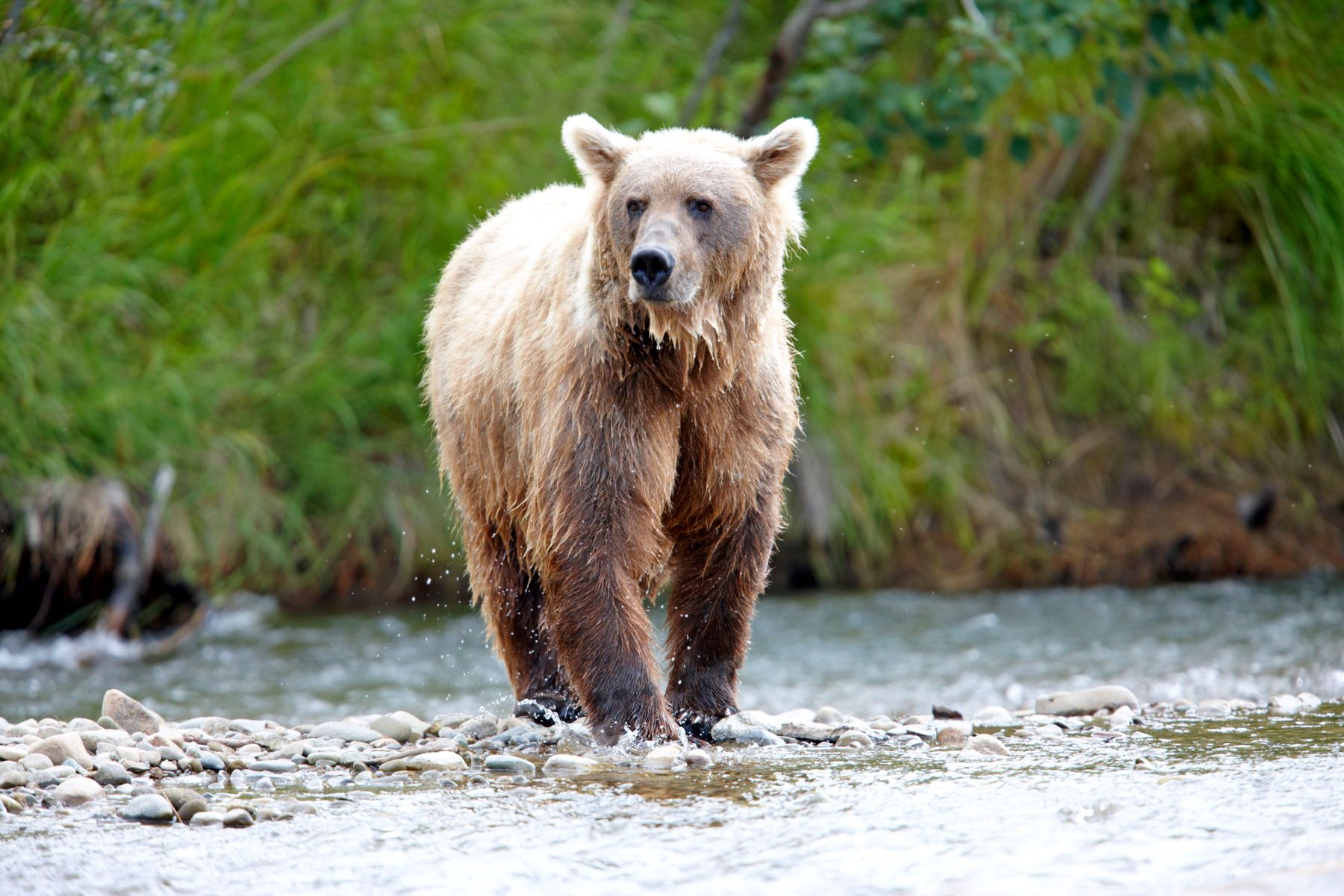
Is Alaska accessible for people with limited mobility?
Whether you’re looking for a guided tour package or independent adventures, there are a wide variety of accessible, year-round vacation experiences available. If you opt for cruise travel, shore excursions at popular ports of call have sightseeing options that include lift-assisted motor coaches or rail cars. Try a helicopter ride above a glacier or watch whales from a wheelchair-accessible boat. For people with sensitivity to noise and light, some cruise companies offer sensory-friendly options, menu alternatives, and private activities.
Service animals are welcome in all public facilities, and national parks have brochures available in braille and large print for visually impaired visitors (call ahead to ensure availability). At most national parks, American Sign Language interpretations are available upon request with advanced notice for ranger presentations. In Denali National Park & Preserve, a popular visitor destination, tour buses are equipped with wheelchair lifts. Be advised that not all national-park trails meet Americans with Disabilities Act (ADA) standards.
Adaptive gear for skiing and other recreational activities is available through organizations such as Southcentral Alaska’s Challenge Alaska and Southeast Alaska Independent Living. Many public and private campgrounds offer accessible campsites, and individual tour providers may offer adaptive gear for activities such as kayaking upon request. Find more information about ADA facilities in Alaska state parks.
Browse our list of businesses that provide accessible tours, accomodations, and transportation in Alaska. Contact your tour operators, accommodation providers, and destination facilities in advance to reserve accessible transportation, rooms, and other services.
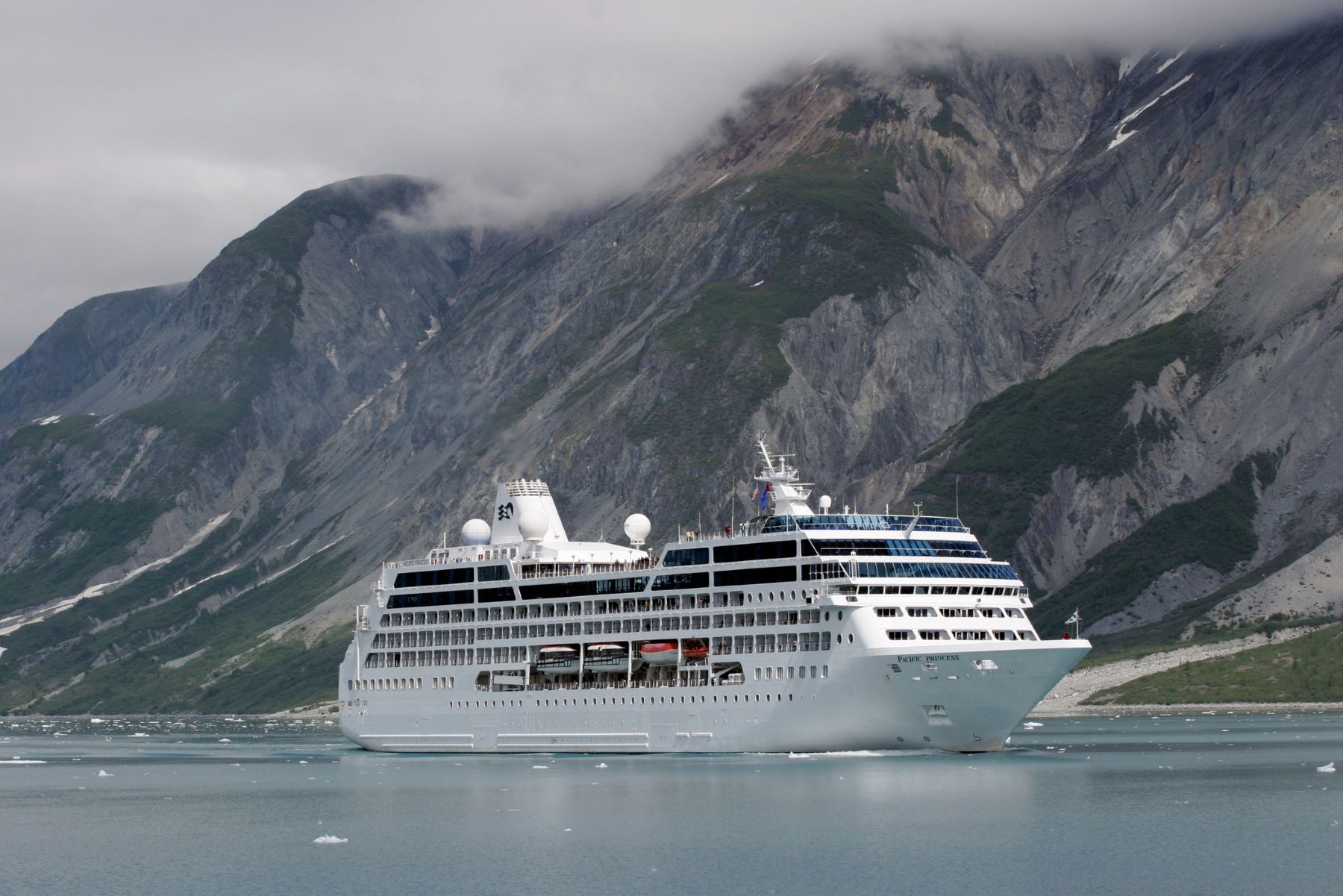
Is it easy to make reservations for a trip to Alaska?
You should make as many arrangements prior to your arrival as possible when planning a trip to Alaska. Accommodations and rental cars can be expensive and hard to find if you wait too long. So, you'll definitely want to reserve those first. Accommodations near popular destinations like Denali National Park and Preserve fill up quickly during peak season and should be booked as early as possible.
For tours, you will want to use sensible judgment. Tours that have limited space should be reserved ahead of time. Activities that are offered several times daily can probably be booked closer to travel. Check with the tour company when you inquire for information about their reservation policies.
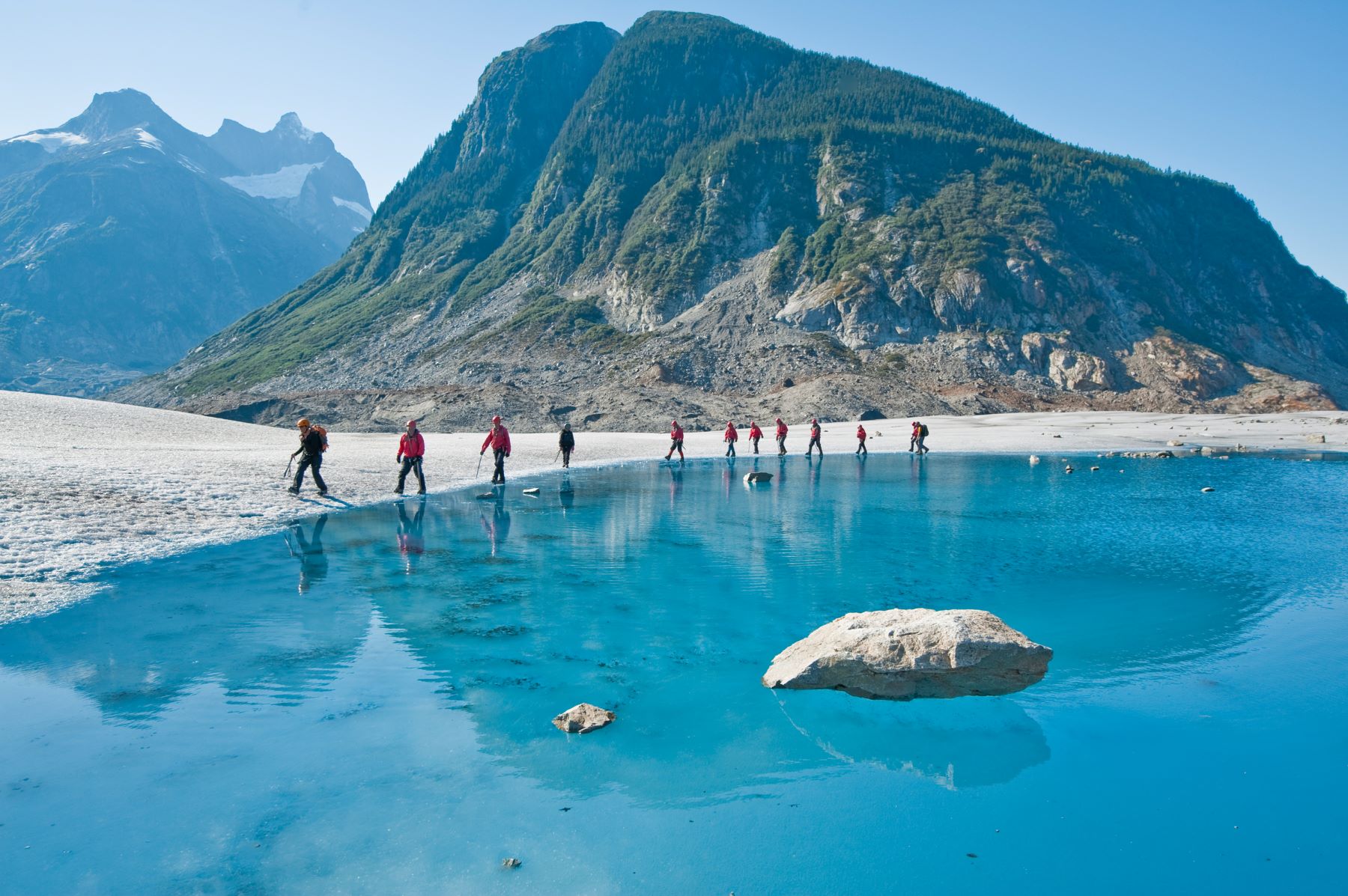
Is marijuana legal in Alaska?
In Alaska, it's legal for adults 21 and older to possess and use recreational marijuana (from approved marijuana stores), but there are limits. Here’s the rundown:
- You can possess and use recreational marijuana if you are 21 and older. If you are younger than 21, it is illegal.
- Licensed marijuana retail stores may sell small amounts of marijuana to recreational users of legal age.
- You can possess up to 1 oz. of marijuana outside the home.
- It is illegal to travel with marijuana. You cannot take it on a cruise, ferry, or airplane. It cannot be transported in or out of the state.
- Consuming marijuana on public lands, cruise ships, or in hotel lobbies is illegal. Check with your accommodations or tour providers to see if marijuana use is permitted in private areas.
- Driving under the influence of marijuana is illegal. Please consume it responsibly.
- Each community has different rules. Check local ordinances online at commerce.alaska.gov.

How many time zones does Alaska have?
Alaska has two time zones—Alaska Time and Hawaii-Aleutian Time. Most of the state is on Alaska time, which is four hours behind our friends on the East Coast. So, when it’s noon in New York, it’s 8 a.m. in Alaska. If you’re traveling from Seattle, Portland, Los Angeles, or another West Coast destination, Alaska is one hour behind your home time zone Hawaii-Aleutian time is reserved for Alaska’s far-western islands along the Aleutian chain. You will only enter this time zone if you’re traveling west of Dutch Harbor. We also observe Daylight Savings Time, moving our clocks ahead in spring and back in fall.
Interesting fact: The town of Hyder, in the Inside Passage, observes two time zones! Bisected by the U.S./Canada border, the town unofficially observes Pacific Time—except for the U.S. Post Office. As a U.S. federal facility, the post office is officially on Alaska Time.

What can I buy in Alaska?
Wherever you go in the Alaska, you'll find unique, authentic Alaskan products and crafts. Handcrafted Alaska Native artwork found in galleries and shops make special gifts and are a wonderful way to remember your trip to Alaska. One-of-a-kind Alaskan handcrafts include:
- Gold-nugget jewelry and items carved from ivory and jade
- Handmade clothing and toys
- Collectors’ items made from animal skins, fur, or bone
- Woven baskets made of beach grass, bark, or baleen
- Alaskan delicacies—canned and smoked salmon, wild-berry products, and reindeer sausage
- Alaska Native seal-oil candles, beaded mittens, fur mukluks, and miniature hand-carved totem poles
Be sure to look for the Made in Alaska logo, which indicates that an item is genuinely manufactured in Alaska. If you find a silver “hand” logo, it identifies the item as an Alaska Native handicraft.


Handcrafted items made of walrus ivory and other by-products of subsistence hunting provide an income source for Alaska Native artisans and it’s a valuable investment for the buyer. Be careful, however. Some wildlife products cannot be transported through customs without special permits. Visitors are advised to mail these souvenirs home to avoid confusion at the border.
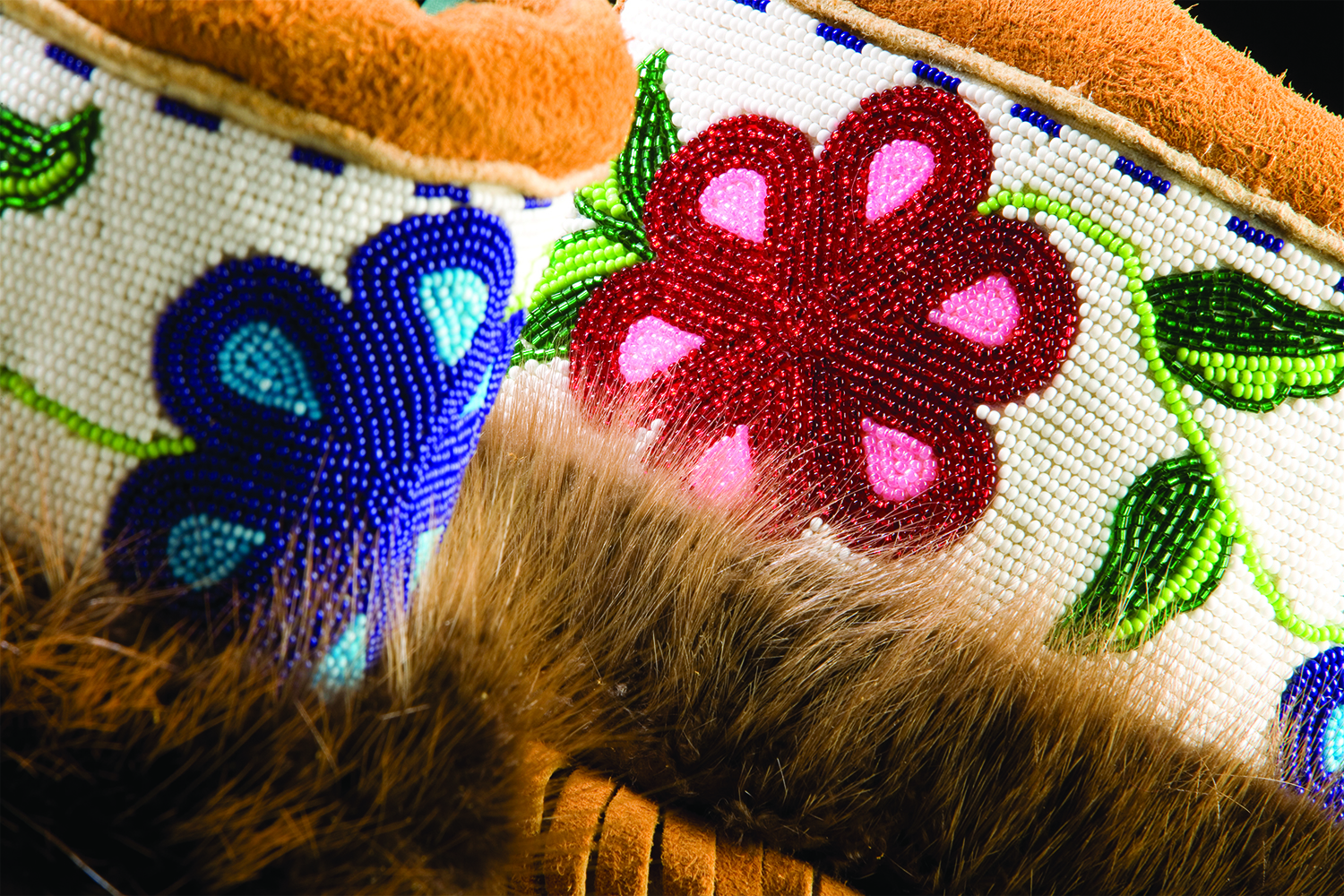
Are there mosquitos in Alaska?
Much like wilderness areas in other parts of the United States, Alaska has its share of pesky insects. Mosquitoes are perhaps the most widespread and persistent insects in Alaska. They occur in the state’s many miles of swampy tundra and lakes from early spring into the fall.
Mosquitoes are generally active in the early morning and at dusk, and they are the most bothersome in areas with stagnant water and little to no breeze. You can't plan your summer vacation around the mosquito, but they are easily dealt with. Every corner store, supermarket, and outdoor center will have a good selection of bug repellent - be sure to keep some on hand.

What should I see in Alaska?
There are many things to see and do in Alaska, so it’s hard to pick just one or two! Exploring Alaska’s natural attractions generally top the list. This includes our ice-blue glaciers, bears and other wildlife, ancient temperate rainforests, and Denali, the tallest mountain in North America. You’ll also want to experience some destinations that are off the beaten path, like walking tours of historical gold-rush towns and day cruises to remote fjords. Immerse yourself in Alaska Native cultures and explore museums to learn more about Alaska art and history. Try a scenic train ride or rent a car for an unforgettable road trip along some of the most beautiful scenic byways in the United States that run from Anchorage south to Seward and Kenai Fjords National Park or north toward Denali National Park and Preserve and Fairbanks.
Looking for more inspiration? Check out our trip itineraries. Adventure awaits!
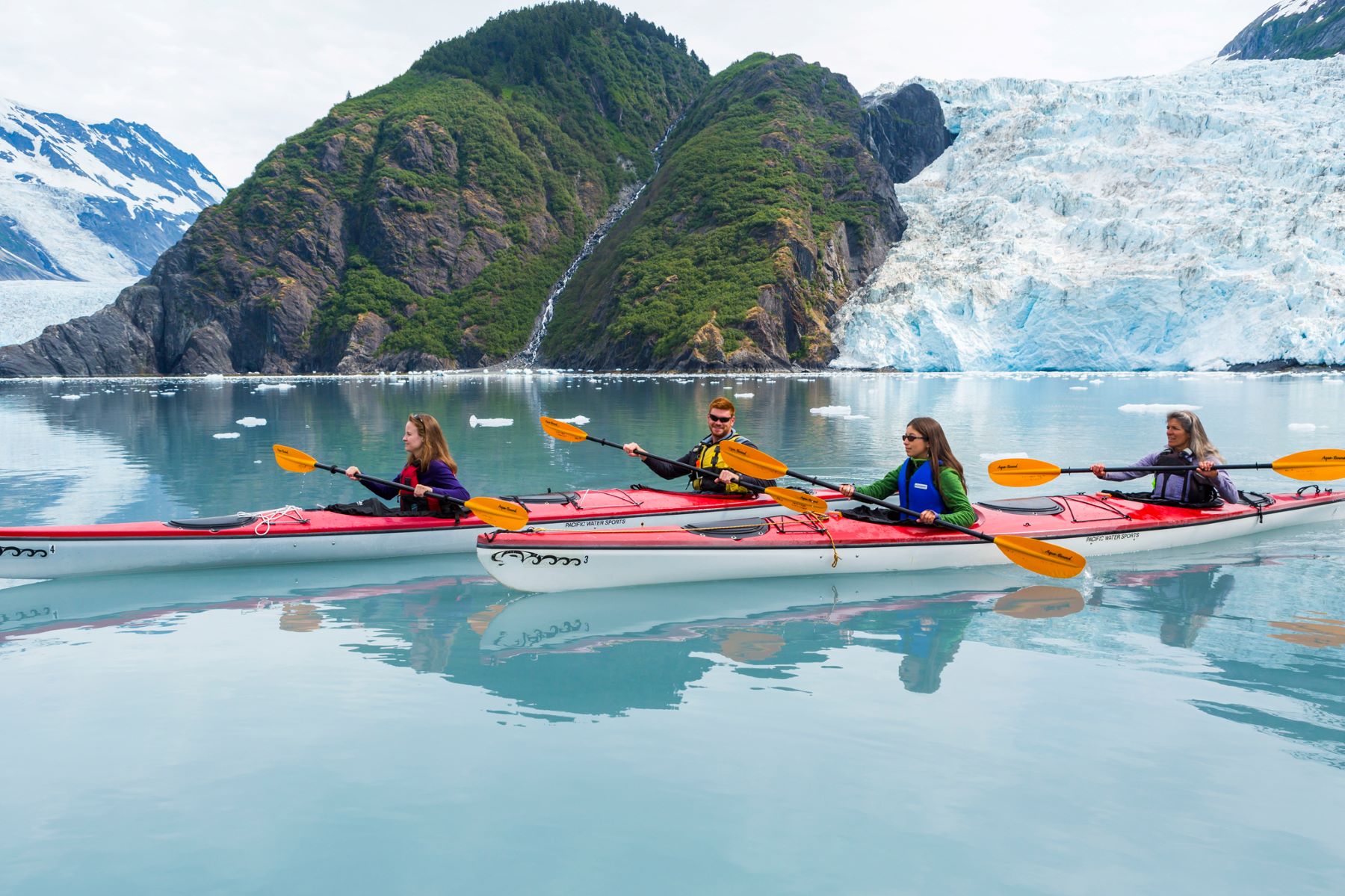
Where is the Iditarod National Historic Trail?
Dog mushing is Alaska's official sport, and the Iditarod Trail Sled Dog Race held every March is the longest, toughest test of a professional musher's endurance. You don't have to own a sled to check out the Iditarod National Historic Trail traversed by the mushers and their fleet of dogs. Drive down Joe Reddington Road in Wasilla to see Iditarod Trail Headquarters. You can stroll the famous trail or even take a sled ride with any number of tour operators offering summer and winter trips.

Where is the most beautiful place in Alaska?
Alaska has so many beautiful places and different ways to experience our amazing landscapes, it’s hard to pick just one “must-see” location. Around every corner you’ll see something unforgettable.
Imagine …
- Standing among thousands of shorebirds as they pause along Southcentral Alaska’s tidelands during spring migration.
- Looking up into the forest canopy of the Tongass National Forest, surrounded by giant trees that are hundreds of years old.
- Watching a 66,000-pound humpback whale leaping out of the protected waters of a glacially carved fjord in Glacier Bay.
- Experiencing the Arctic horizon, where wide-open skies meet calm waters off Utqiagvik.
- Seeing pink alpenglow touch the tips of snow-covered mountains, painted by the low angle of the setting sun.
- Walking on the tundra’s vast, soft carpet of reds, whites, and greens.
- Admiring the power of Alaska’s coastal brown bears as they race up and down rivers filled with silver, pink, and red spawning salmon.
- Hearing the rolling thunder of ice calving off sapphire-blue glaciers.
- Looking at the greens and reds of the northern lights dancing above your head.
- Listening to the music of Alaska Native dancers, experiencing traditions that are thousands of years old.
- Flying over high mountain passes to see Alaska’s immense scale.
- Paddling a kayak along secluded coves.
No matter where you go or what you do, you're sure to have a truly unforgettable Alaska experience.

Travel Inspiration
#TravelAlaska
#TravelAlaska
 @wishfuldreamstravel
@wishfuldreamstravel
 @fantasyvoyage659
@fantasyvoyage659
 @wishfuldreamstravel
@wishfuldreamstravel
 @pollykhorn
@pollykhorn
 @wishfuldreamstravel
@wishfuldreamstravel
















